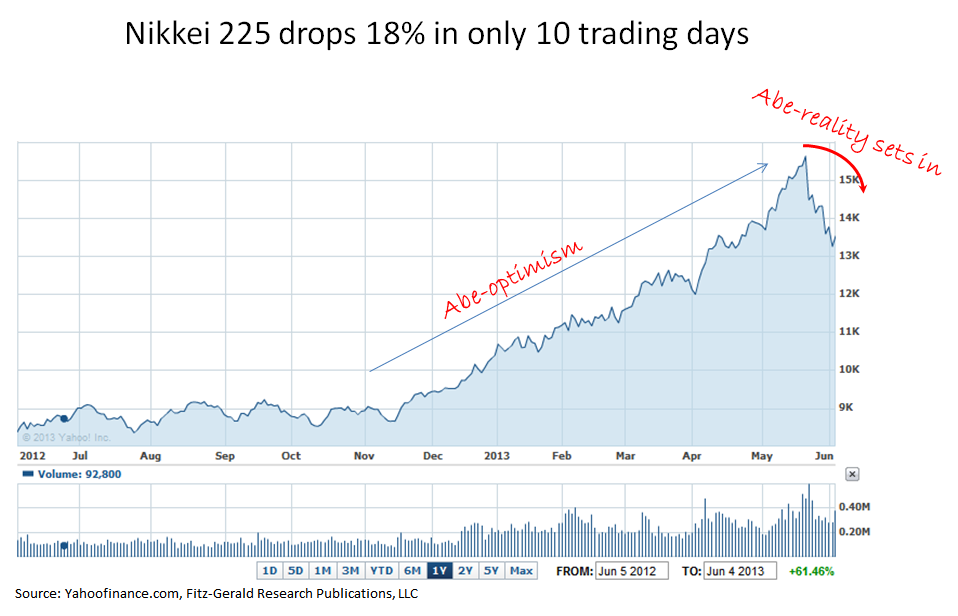Bear Market Archives Money Morning We Make Investing Profitable
Post on: 16 Март, 2015 No Comment

The Best Play for a Scary Market
U.S. blue chips suffered their biggest drop in five weeks recently because the latest round of economic reports are fostering a lot of uncertainty about the prospects for continued global growth.
For most investors, it’s been that kind of year.
But I continue to believe that the tech sector — especially here in the U.S. — still has a lot of fuel left in its tank.
Because I know a lot of you folks are concerned, I thought we’d take the time to alleviate some of those fears. and make some money along the way.
And the best way to alleviate fears is to initiate a plan of action.
So that’s just what we’re going to do.
Today I’m going to show you a strategy that will help you put the odds in your corner.
And I’m even going to give you a tech stock that will get you started.
When you’re done reading this, you’ll be ready to laugh at the next sell-off. Full Story
How to Protect from a Stock Market Crash in 2014
When the markets are down like they have been in 2014, it’s smart to know how to protect your money from a stock market crash .
While other investors worry about the markets tumbling further, you can start protecting yourself from a potential stock market crash.
A Guide to Getting Rich in a Bear Market
To most investors, just surviving a bear market is more important than finding the next jet-fueled growth stock.
But I want to let you in on a secret: Rather than just trying to survive, investors can actually thrive in bear markets. In fact, I make a lot more money a lot faster in bear markets than I do in bull markets.
After all, stocks and most other asset classes typically fall faster than they rise, because fear is a much stronger motivator than greed.
So if you’re not making money in a market like this one — where prices are falling, even plummeting — you’re missing out.
It’s time to change that. And I’m going to show you how.
Bear Market Funds
The best way to profit from a bear market is to use exchange-traded funds (ETFs) in conjunction with options.
Let’s first look at the ETF component.
There are plenty of inverse ETFs that go up in price when markets go down. And for even more oomph . there are leveraged inverse ETFs.
You can use these funds to short stocks and commodities, without having to open an options account, or rely on a broker.
But remember to do your homework. Make sure you understand exactly what each ETF you’re interested in actually represents. Don’t just go by the name. Read each prospectus to learn how the fund’s investments are allocated and how it’s supposed to perform under various market conditions.
Also be sure to check the bid -and -ask spread to make sure it isn’t too wide, and the average daily volume to make sure it isn’t too thin. I don’t trade any ETFs that trade less than 1 million shares a day, on average.
Another thing to keep in mind is that many ETFs make good short-term trading vehicles, but are bad long-term investments. That’s because many ETFs don’t track their benchmarks precisely. And if they are leveraged, the tracking error widens considerably over time.
Still, these are very versatile instruments. You can buy them in retirement accounts, they are margined the same way stocks are, they are liquid and tradable all day, and you can put in stop-loss and profit -target orders.
Exploring Your Options
The second way to profit from a bear market is through short selling.
I say that all the time and I’m surprised how many people think it’s wrong to short stocks.
Trading to make money in a bear market has nothing to do with what’s good for the U.S. economy or for America. It’s simply a matter of what’s good for your net worth.
The old notion that it’s un-American to short stocks comes from Wall Street’s institutional elite. They don’t want the public shorting stocks. In fact, they don’t want the public even selling stocks. Why? Because Wall Street wants buyers lined up to pay for the stocks that it is selling short.
The Looming Bear Market: What You Can do That Washington Can’t and Wall Street Won’t
I just finished a battery of media appearances on Fox Business . Bloomberg . BNN and CNBC Asia, and without exception I was asked about two things: President Barack Obama’s jobs bill and the U.S. Federal Reserve’s QE3.
The first thing investors and analysts alike want to know is whether or not the president’s jobs bill will work. The answer to that question is no — not as it stands, anyway.
The second question is whether or not Fed Chairman Ben S. Bernanke will further extend the central bank to help the economy. Well, I do think the Fed will intervene, but I don’t believe for a second that the central bank’s intervention will help the U.S. economy.
As a result, we’re likely to see stocks enter into a bear market and retest their March 2009 lows.
I know that’s a terrifying thought. But to be perfectly honest, there’s nothing President Obama or Bernanke can do at this point. If companies don’t want to spend the $2 trillion worth of cash they’re hoarding, there’s very little the government can do to encourage them to loosen their purse-strings.
That said, I want to give you five specific steps to take to protect yourself from the looming bear market, preserve your sanity — and even profit.
But before I get to that, you need to understand the dangers that are fast approaching.
A Roadblock to Recovery
President Obama and Chairman Bernanke can toss all the money they want at the economy. But no amount of spending can change the fact that we need the following three things to get our market moving again. They are:
- Sustained demand.
- A solution to the European sovereign debt crisis .
- And a bottom in housing prices.

As it currently stands, the U.S. economy will be lucky to log 1% growth this year, which is even lower than the anemic 1.5% I predicted in my annual forecast in January.
That’s pathetic for a nation that spent more than $1.4 trillion of borrowed money on stimulus. This lackluster growth is also evidence that the Obama administration’s $800 billion stimulus plan — and the Fed’s two rounds of quantitative easing — did absolutely nothing to salvage our economy.
Citizens are scared silly. Businesses are uncertain. They’re uncertain of regulatory changes, uncertain of taxes, and uncertain about their overall economic environment. So they’re doing what rational people do when confronted with the unknown: They’re hunkering down.
And with good reason.
The typical U.S. family got poorer during the past 10 years due to a decade-long income decline. Median household income fell to $49,995 last year, and is now 7% below where it was in 2000. The number of people living in poverty has risen to 15.1%, the highest level since the U.S. Census began tracking this information in 1959.
It should also be noted that a large portion of that decline is directly attributable to inflation, which the Fed continues to assert is transitory.
Out of the Fire.
You may be holding out hope that the president’s jobs plan will help turn things around — but it won’t.
Are You Betting on a Bull Market?
By Kerri Shannon. Associate Editor. Money Morning — March 1, 2011 Print | Email
On March 9, the U.S bull market in stocks will celebrate its second birthday.
But what everyone really wants to know is this: A year from now, will we be celebrating again — or will we be trying to outrun the bear?
So far, 2011 is delivering on that bull market promise. The just-finished month of February represents the third straight month of U.S. stock-market gains.
All three major indices are up more than 5% so far this year. The Standard & Poor’s 500 Index rose 3.02% in February and 2.26% in January. In fact, even with the damage that the Middle East crisis inflicted on stock prices at the end of last month, the S&P 500 and Dow Jones Industrial Average each enjoyed their strongest February showing since 1998.
Strong Second-Quarter Earnings Can’t Keep the Bears at Bay
By Jon D. Markman. Contributing Writer. Money Morning — August 6, 2010 Print | Email
The second-quarter earnings season has gotten off to a strong start, but it’s been no match for bears who are less than thrilled with future earnings prospects.
More than half of the companies on the Standard & Poor’s 500 Index have reported second-quarter earnings results. And so far, they’ve been strong, with two-thirds of those companies beating earnings estimates, three-fifths beating on sales and almost half beating on both earnings and sales.
As a result, the consensus second-quarter earnings per share estimate has climbed to $20.63 from $19.60 at the beginning of the month. Merrill Lynch analysts expect final second-quarter earnings per share to come in at $20.75 — a 5% sequential improvement from the first quarter.
That would be a deceleration from the 15% sequential growth seen between the fourth quarter of 2009 and the first quarter of 2010, but it’s good growth nonetheless. In fact, it puts 2010 S&P 500 earnings at about $83 per share. And at current prices, that gives the market a price-to-earnings multiple of just 13.3-times — below the long-term historical average of 15.
Bull Market Update: U.S. Stocks Are Hanging By a Thread But It’s a Tough Thread
By Jon D. Markman. Contributing Writer. Money Morning — June 17, 2010 Print | Email














